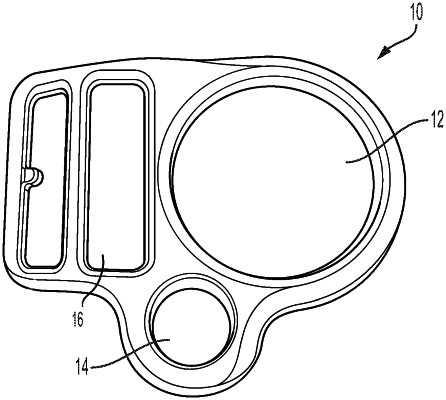| CPC A62B 35/0037 (2013.01) [A44B 11/04 (2013.01)] | 11 Claims |

|
1. A D-ring device, comprising:
a body having a first surface and a second surface extending in spaced relation to one another and further comprising a proximal portion and a distal portion;
a main body area formed between a first outer edge extending in a first plane and a second outer edge extending in a second plane substantially parallel to the first plane;
a body extension area extending from the second outer edge of the main body area, wherein the body does not extend beyond the first outer edge of the main body area:
a first aperture having a first diameter formed through said first and second surfaces positioned on the distal portion of the body within the main body area;
a second aperture having a second diameter formed through said first and second surfaces such that the second aperture is adjacent to the first aperture and positioned in between the distal and proximal portions of the body wherein the majority of the second aperture is positioned outside of the main body area wherein the first diameter is larger than the second diameter; and
a first belt receiving aperture formed through said first and second surfaces wherein the first belt receiving aperture is positioned on the proximal portion of the body within the main body area; and
a second belt receiving aperture, directly adjacent to and extending in a parallel direction along a length of the proximal portion of the body coincident with the first belt receiving aperture, formed through said first and second surfaces wherein the second belt receiving aperture is positioned on the proximal portion of the body within the main body area.
|